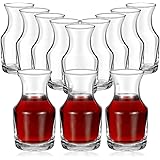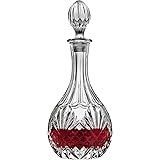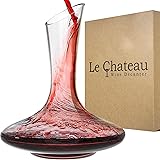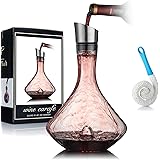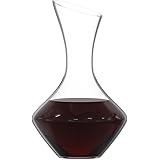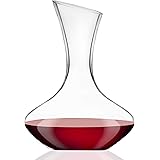Navigating the sophisticated world of wine can often feel daunting, especially when it comes to formal wine tastings. Did you know that a mere increase of 1 degree Celsius can significantly alter the perceived aromas and flavors of certain wines, shifting its profile entirely? This subtle shift highlights just how delicate the sensory experience of wine tasting truly is. As eloquently discussed in the video above, mastering a few key etiquette tips transforms your participation from awkward to exceptionally professional. It’s not just about what you know about wine; it’s also about how you carry yourself.
Professional wine tastings, whether they are grand Champagne soirées or intimate winery visits, operate on a set of unspoken rules. Adhering to these protocols not only shows respect for the wine, the winemaker, and fellow tasters but also enhances your own sensory perception. Let’s delve deeper into these essential guidelines, ensuring your next wine tasting experience is both enlightening and impeccably refined.
The Unseen Intruder: Why Fragrance is a Faux Pas
One of the most critical, yet frequently overlooked, rules of wine tasting etiquette is to abstain from wearing any fragrance. This extends beyond heavy perfumes to include scented lotions, hairsprays, and even strong deodorants. When you attend a wine tasting, the air is filled with delicate aromas – the very essence of the wines being presented.
However, modern fragrances are complex concoctions of volatile organic compounds designed to project and linger. These powerful synthetic scents can easily overpower the subtle esters, phenols, and thiols that give wine its distinctive bouquet. Your seemingly light perfume might be imperceptible to you after a while due to olfactory fatigue, but it remains a potent distraction for those around you, effectively clouding their ability to discern the wine’s true character. To fully appreciate the intricate layers of a vintage and to show consideration for other tasters, approach the event “naked” in terms of scent, allowing the wine’s natural perfume to be the star.
The Art of the Stem: Holding Your Wine Glass Correctly
The way you hold your wine glass speaks volumes about your understanding of wine. Grasping the bowl of the glass might feel natural, but it’s a practice best reserved for casual home sips. In a professional setting, holding the glass by its stem or base is paramount, and there are two distinct reasons why.
Firstly, your body temperature, which averages around 36.5 degrees Celsius, will invariably warm the wine in the bowl. Most wines, particularly whites, rosés, and lighter reds, are served at specific cooler temperatures to highlight their crispness, acidity, and aromatic complexity. Warming them up can mute these desirable characteristics, leading to a less enjoyable and accurate tasting experience. Conversely, holding the stem keeps your hand away from the liquid, maintaining its optimal serving temperature.
Secondly, human skin naturally produces oils. These oils, along with any remnants of food or lip gloss, easily transfer to the glass, leaving unsightly smudges and fingerprints. A pristine, clear glass is essential for evaluating a wine’s appearance – its clarity, color, and viscosity. These visual cues offer valuable insights into a wine’s age, varietal, and winemaking process. Therefore, maintaining an unblemished glass ensures an unobstructed view and a more professional presentation.
To Spit or Not to Spit? Understanding the Rationale
For many newcomers, the idea of spitting out wine feels counterintuitive, even rude. Yet, in professional wine tasting circles, spitting is not just accepted; it’s encouraged and often necessary. This practice stems from a pragmatic understanding of both sensory acuity and alcohol consumption.
When you attend a comprehensive tasting, you might sample dozens of wines. If you were to swallow every pour, the cumulative effect of alcohol would rapidly impair your judgment and dull your palate. Alcohol has a well-known tendency to cloud the mind, making it progressively harder to accurately assess a wine’s subtle nuances of aroma, flavor, and texture. By spitting out most of the wine after it has coated your palate, you effectively minimize alcohol intake while still allowing your senses to register the full spectrum of its characteristics.
Moreover, frequent spitting helps maintain palate freshness, enabling you to discern differences between wines more clearly throughout an extended session. So, if you aim to keep your senses sharp and avoid becoming overly inebriated – a common pitfall that can lead to being discreetly, or not so discreetly, escorted out – make good use of the spittoon. It’s a hallmark of a serious taster.
Respecting the Receptacle: Proper Spittoon Protocol
Spittoons are indispensable tools at any professional wine tasting. However, their utility depends entirely on proper etiquette surrounding their use. Standing too close, chatting casually with friends, or worse, using the spittoon as a makeshift table for your tasting notes, is a significant faux pas.
When you’re ready to expectorate, ensure you have a clear path to the spittoon. Don’t block it or make it difficult for others to access. It’s a shared utility, designed for swift and discreet use. Obstructing it not only creates an awkward situation for those needing to spit but can also lead to messy accidents. Think about the common courtesy of not hovering over a water cooler when others are waiting. The same principle applies here, perhaps even more acutely. And for those with longer hair, a quick note: ensure it’s tied back or managed to avoid an unfortunate dip into the communal receptacle. Such mishaps are both unhygienic and entirely preventable.
Cleansing Your Palate: Beyond Coffee Beans
Between tasting different wines, particularly when transitioning between varietals or styles, cleansing your palate is crucial. A clean palate allows you to fully appreciate the next wine without residual flavors interfering with your perception. There’s a persistent myth that smelling coffee beans helps reset the olfactory senses. However, this is largely ineffective and can even be detrimental.
Coffee, with its strong, complex aroma and oils, introduces its own set of sensory data points that can further confuse your fatigued nose and palate. Rather than clearing, it merely adds another layer. Instead, the most effective and universally recommended palate cleanser is plain water. Drinking plenty of water helps to rinse away residual flavors, hydrate your mouth, and gently reset your olfactory receptors. Plain crackers or a neutral bread can also serve a similar purpose, absorbing lingering flavors. Remember, your nose naturally tires after a while, so taking brief breaks and smelling/drinking water is the ideal approach to keep your senses performing optimally throughout the tasting.
The Unfinished Glass: When It’s Okay to Dump
At a wine tasting, the objective is to taste, evaluate, and understand the wine, not necessarily to consume an entire glass. Most pourers will provide a sufficient measure to allow for a thorough assessment of appearance, aroma, and flavor. There is absolutely no obligation to finish every drop in your glass, especially if you find a particular wine unappealing or simply wish to manage your intake.
If you decide not to finish a pour, it is perfectly acceptable to discreetly dump the remaining wine into an available spittoon (assuming it’s not blocked!). This practice helps you conserve your palate and enthusiasm for the wines you genuinely want to explore. Conversely, it is considered quite rude to ask for a full glass. A wine tasting is an educational and exploratory event, fundamentally different from ordering a beverage at a restaurant. If you wish to revisit a particular wine, a polite request for another small pour is acceptable, but demanding a full serving undermines the very purpose of the tasting.
Stay Humble, Stay Professional: Avoiding the “Wise-Ass” Trap
Many attendees at wine tastings possess considerable knowledge and passion for wine, which is fantastic. However, there’s a fine line between sharing insightful observations and monopolizing the conversation or attempting to “out-knowledge” the hosts or other guests. The primary purpose of a professional wine tasting is often to hear directly from the winemaker, a winery representative, or the event organizer. They are the authoritative voices, offering unique insights into their creations and the story behind the wines.
While your comments might be interesting or contribute to a lively discussion, ensure they enhance, rather than dominate, the experience. Avoid overly technical jargon, obscure references, or lengthy monologues that might bore or alienate others. The goal is to engage, learn, and appreciate, not to show off. As the video wisely suggests, “stay sexy and humble.” True professionalism lies in respectful participation and an eagerness to learn, allowing everyone to enjoy the shared experience. This approach ensures you not only look professional but also foster a positive and collaborative atmosphere at every wine tasting event.


